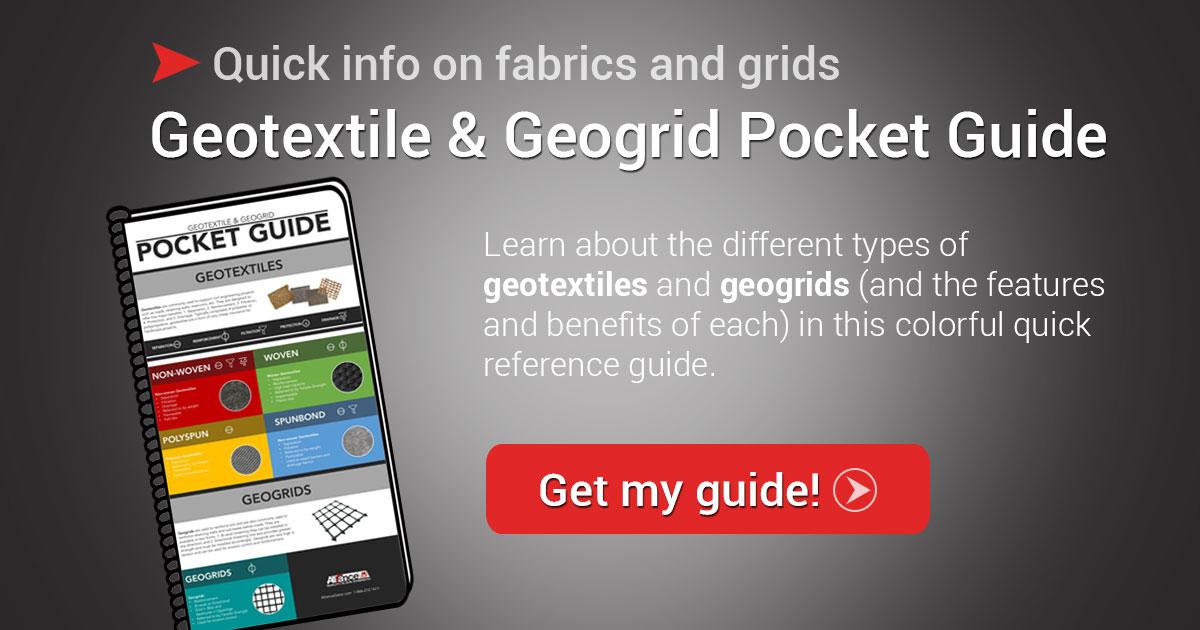5 WAYS A GEOTEXTILE CAN IMPROVE YOUR HARDSCAPE DESIGN
Geotextiles are commonly used to support civil engineering projects such as roads, retaining walls, reservoirs, etc. Seeing geotextiles used in smaller hardscaping projects … well, that’s not so common. However, these manmade fabrics can significantly improve the strength, stability, and design of just about any project where soil is involved. We like to think of it as very cheap insurance. The goal of this blog post: to convince you not to overlook this extremely beneficial product. Here are five ways a geotextile can help improve your next hardscape design.
1. Separation
Geotextiles help to maintain the integrity of each material used in a project by preventing the bedding material from settling into the subbase and preventing the subbase from mixing with the native soils. This separation of materials will essentially allow each material to perform as it was intended to. The end result: maximized strength and stability!
2. Reinforcement
Acting as a separation barrier between materials used below the surface, a geotextile will reinforce the entire design. Geotextiles have higher tensile strengths than soils, therefore, use of a geotextile will add a very high level of durability and help prevent deformations and/or failures from occurring in the future. Want to see a real life example of soil reinforcement? Check out this YouTube video by the Dirt Ninja!
3. Filtration
Non-woven geotextiles eliminate the possibility of soil mixing and clogging of drainage systems by serving as a filter. As water moves through the layers below the surface, fine particles and silts are left behind. This will prevent any clogging within the system (as well as future damage that could be costly to fix).
4. Protection
Geotextiles can provide an added level of protection to a hardscaping project. They can be used as a layer of padding (i.e. under a pond liner) and also serve to effectively protect slopes against erosion.
5. Drainage
Lastly, a non-woven geotextile will allow for subsurface water drainage and moisture removal from the system.
Now that you're familiar with the five main functions of a geotextile, go and explore the different options that are available by downloading a copy of our Geotextile & Geogrid Pocket Guide. This colorful quick reference breaks down the features/benefits of each product so you can easily determine which one is best suited for your next project!


